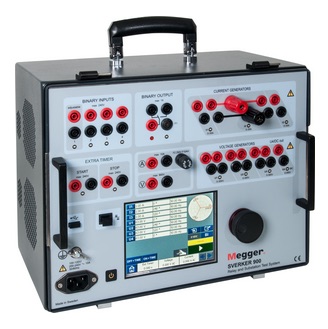
Protecting safety with distributed generation schemes
by Lennart Schottenius and Niclas Wetterstrand

Rate of change of frequency (ROTOF) provides a reliable approach to testing and troubleshooting
—Sponsored article by Megger
Embedded or distributed generation schemes, where a local generator is connected directly to the distribution network, are becoming widespread.
The operators of these schemes face an important challenge: how to ensure the system behaves safely and predictably if the local generator becomes isolated from the network—a condition known as islanding.
There are numerous potential hazards associated with islanding, not the least of which is engineers working to restore network connection may not realize the system is still powered. Another hazard is the generator may continue to supply local loads but, without support from the network, this may result in it being heavily overloaded.
The solution usually adopted to address these hazards is to immediately shut down the islanded generator, but this can only be done if a fast and dependable way of detecting islanding is available. Many approaches are possible, but one widely used is ‘rate of change of frequency’ (ROCOF) protection, which has established a reputation for responding faster and more reliably than alternative protection techniques.
Detecting rapid changes
ROCOF protection relies on the fact that once a generator is islanded, its output frequency will no longer be locked to that of the network, but will change rapidly to a frequency determined by its own characteristics and those of the loads it’s still supplying. It’s this change in frequency that is detected by ROCOF protection devices.
ROCOF protection conforms to engineering requirements such as G59/3 in the UK and standards such as ANSI 81R in the U.S. There are strict guidelines for ROCOF settings and unless these are optimized, the protection may unnecessarily trip a generator when problems occur with the power network, and the resulting loss of capacity may make the problems worse.
To help guard against this situation, G59/3 was revised in 2014 to require new settings for ROCOF protection when used in conjunction with generators connected to the UK power network.
Clearly, a reliable method of checking the settings and accuracy of ROCOF protection is essential.
Easy to configure
Suitable functionality is provided by Megger’s innovative three-phase Sverker 900 instrument, which has been conceived as an engineer’s multifunction test box for protection testing.
This novel instrument doesn’t need to be connected to a PC and features an intuitive user interface with a colour touchscreen. The design provides access to a wide range of pre-configured virtual test instruments, allowing the required test function to be selected quickly and easily.
Full manual control and configuration are also supported and in addition to the touchscreen, the Sverker 900 is provided with a large rotary knob that can be configured as required to control the voltage and current generators.
When testing ROCOF protection, the Sverker 900’s ramping instrument is used. Because this generates a very smooth and accurately controlled ramp, this has proved to be an excellent and dependable tool for these tests.
The instrument is easy to configure for ROCOF testing and, once the start and stop criteria have been defined, can be used to check the operation of low and high level trips and also to verify the trip time delay set for low and high level operation.
Detailed guidance on ROCOF testing with the Sverker 900, including information about connections and instrument settings, is available in the form of an application note. This can be obtained free-of-charge on request from Megger, or it can be found on the Megger website at www.megger.com
Lennart Schottenius is a Support Specialist with Megger. Niclas Wetterstrand is a Program Manager. This is an edited version of the original article, which appeared in the August 2016 edition of Megger’s Electrical Tester Magazine.
Megger designs and manufactures portable electrical test equipment. Megger products help you install, improve efficiency, reduce cost and extend the life of your or your customers’ electrical assets. To learn more visit www.megger.com.
To view more articles on electrical testing, visit the Electrical Testing Centre on CanadianManufacturing.com